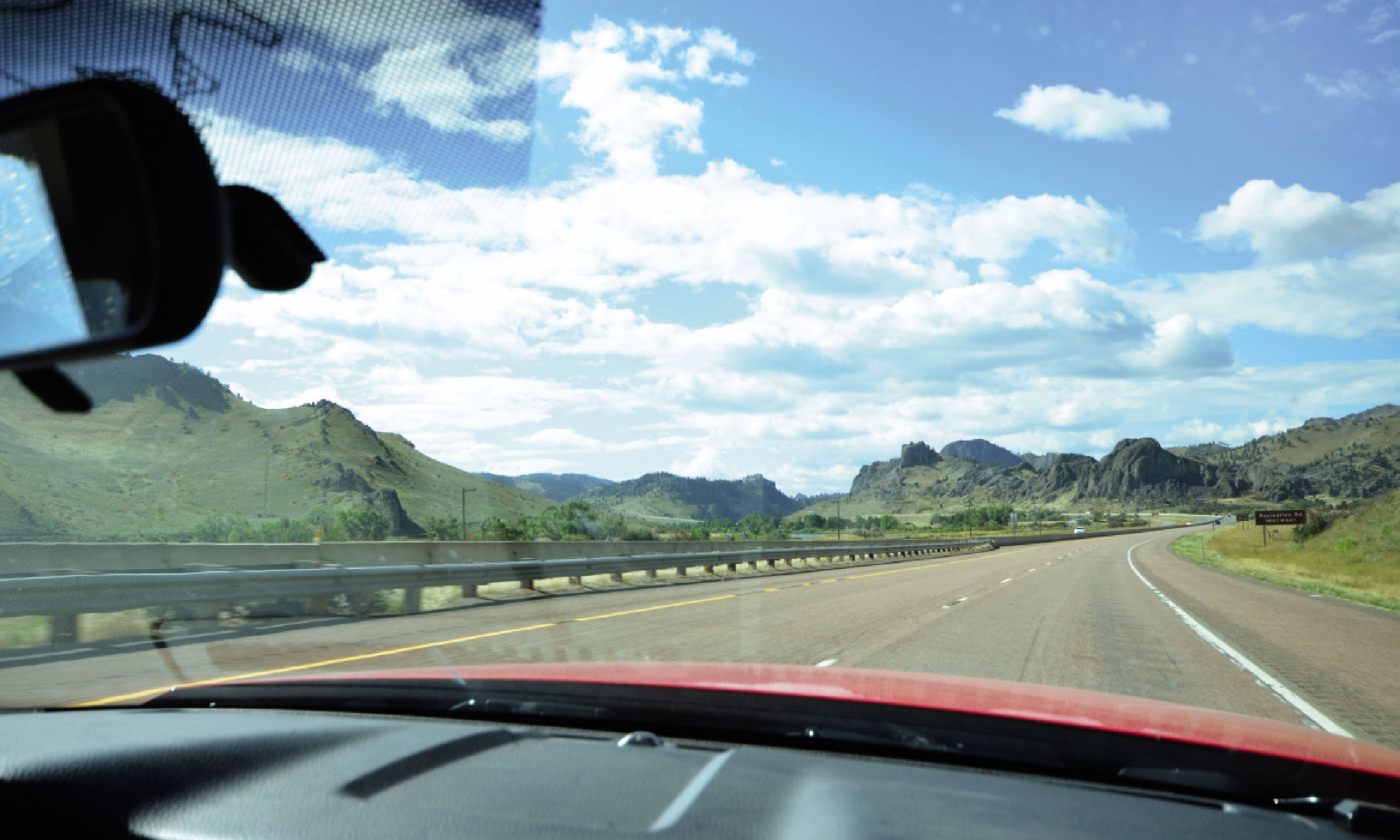
The ultimate USA road trip
Nowhere delivers the thrill of the open road quite like the USA – but where to start? And where to find the routes less-travelled? Here's how to plan an awesome American road trip – Mustang essential, of course...
There’s little as enticing to the average road tripper as a fork in the road. To my left lay the quick route to Denver; it was the obvious, responsible choice if I was to make my pre-planned arrival time. But to my right... A tempting, meandering detour through Rocky Mountain National Park. It would at least double my drive time. Taking it would be supremely reckless. After a brief deliberation, I turned right.
Not for the first time on this trip, I felt the thrill of rebellion. Indeed, this whole drive was something of a revolt against the classic US road trip. I’d previously driven both Route 66 and Route 1, so this time I’d made a conscious decision to follow no set highway or preordained trail and instead create something more unique.
Armed with a map, a loose plan to be in Denver a few weeks hence, and the keys to a red Mustang (I wanted to tackle this frontier with some genuine horse power), I started in Seattle, unofficial capital of the Pacific Northwest, sandwiched between salty Puget Sound and serene Lake Washington. As I drove out of the city, the skyscrapers were soon replaced by the serrated edges of the Cascade Mountains; highest among them, caked in glaciers, was Mount Rainier, the stratovolcano that dominates the eponymous national park. Its summit is a challenge for experienced mountaineers only, but thankfully there are plenty of other options.
“If you want to escape the crowds try the Moraine Trail,” suggested interpretive ranger Maureen McLean as I arrived at Paradise, and the visitor centre. “As soon as the tarmac ends, so do the people and you will get to peer into the belly of the mountain.”
 Mount Rainier National Park
Mount Rainier National Park
I was sold, and half an hour later I’d dismounted the Mustang and was on foot, tracing a faint route through wild flowers. Every now and then I’d hear the rustle of chipmunks, smell the sweet nectar of crushed huckleberries, or see a peregrine falcon swoop.
I reached a slope, climbed up loose scree and reached an edge where the earth just fell away at my feet, the glacier having carved its way through. Before I’d set off, Maureen had told me, “There isn’t a bad walk from Paradise, there’s just a bad walk for you. We always say here: one man’s Paradise is another man’s hell on earth.” From my vantage I watched people in the distance on the crowded Panorama Trail, walking queue-like uphill, and smiled. I knew which one I’d found.
From booze to brothels
It was tempting to linger in the shadow of Rainier, but I needed to push on east. Leaving in the pink glow of dawn I picked up the main highway and began scanning road signs for points of interest. The first came at the turn off for Yakima. From the road it didn’t look much – just the obligatory Walmart and McDonald’s signs – but soon I found myself surrounded by countryside, and vineyards.
“Yakima is the Napa of the north,” said winemaker Tad Fewel as he poured me a glass. Tad owns a small winery called Cultura, producing 1,500 cases of red a year; he also still works on his family’s orchard, running a bio-diesel plant – which is used to power his vineyard equipment. His mother, Pepper, runs Cherry Wood B&B and offers agricultural tours to educate people on food provenance.
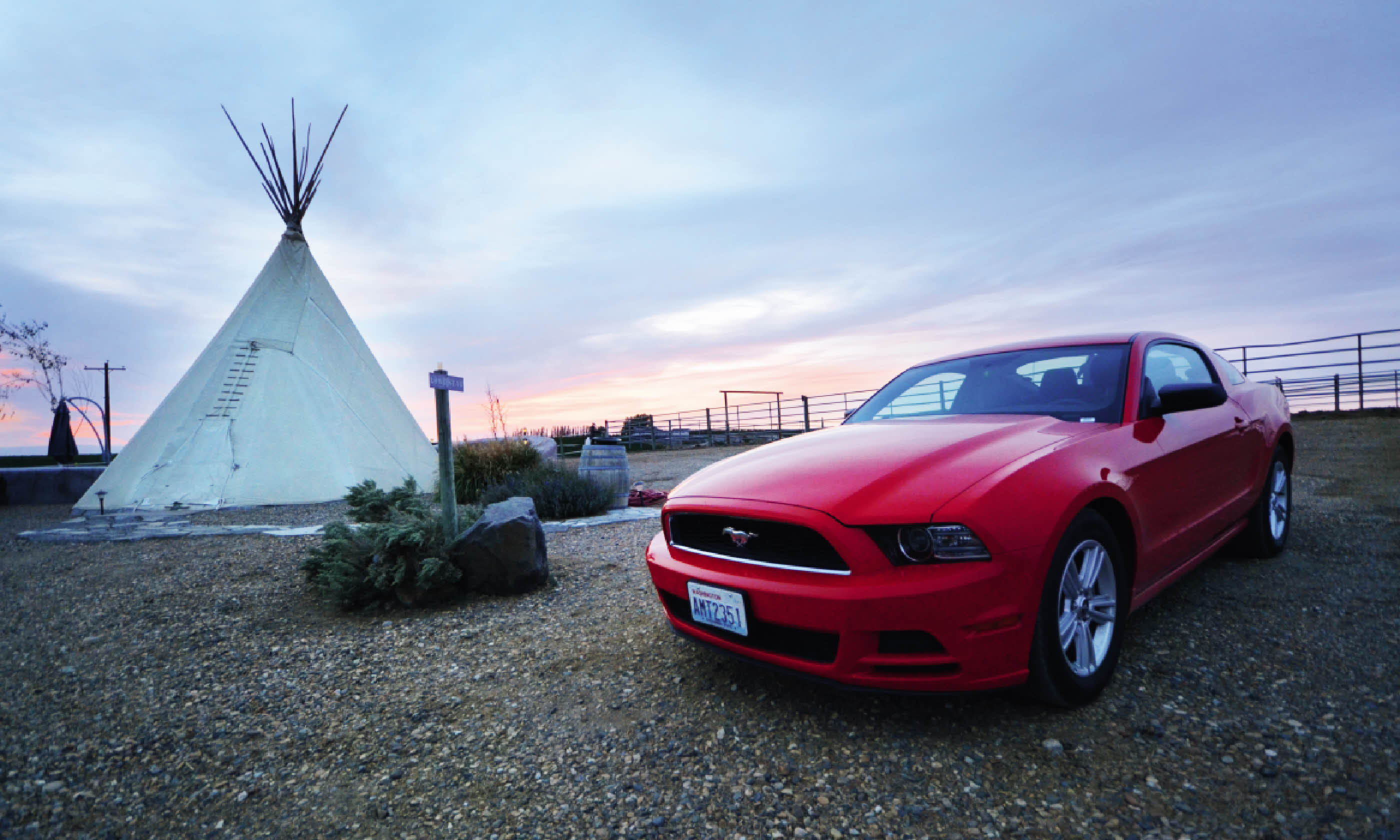 Cherry Wood B&B
Cherry Wood B&B
Nearly all the horses on her farm (around 30) were rescued from slaughter – “we’re a country who doesn’t like old,” she explained – and every penny from wine tours on horseback or wagon goes to fund the rescue programme. I left my mechanical pony under the watchful eye of a mule to check out the orchard.
After ambling among the apple trees I headed for the Yakama Nation Museum & Culture Centre in nearby Toppenish to learn about the Native Americans who called this valley home. “Most exhibits here were willed from Nipo Strongheart,” said museum program manager Miles Miller. “He was a Hollywood actor in the 1920s and collected books, pictures and artefacts from many tribes.”
The displays showed how resourceful the Yakama tribe was at living off the land and told of the devastation caused to them in 1957 when Celilo Falls, near the Oregon border – where their ancestors had fished and traded for centuries – was flooded and dammed to facilitate a hydropower plant. It was a dark moment for the Yakama, and one that stayed with me that night as I sat beside my teepee at Cherry Wood, watching the timeless stars dance overhead.
In the morning I continued east, crossing from Washington into Idaho. At Coeur d’Alene, a city that sits on the northern tip of the lake that shares its name, I took my Mustang to the water and temporarily swapped it for a kayak, paddling with Peter Petticolas from Row Adventures. He told me that the area was once a favoured spot for the Coeur d’Alene tribe who would camp here over winter, ice-fishing on the lake, making tools from the trees, and sharing stories over the fire. Nowadays, the city’s streets are lined with coffee shops and restaurants, and it’s mainly retirees who call it home.
Next stop: Wallace, once the silver mining capital of the US. At its peak it had a population of nearly 4,000 people; today that number is just over 700 and tourism is its main source of income. Old West in theme, it’s a cluster of antique shops, boutiques, diners, pubs and the most unique museum on this road trip: the Oasis Bordello Museum was a brothel until 1988, when it was raided and shut down; it was locked up for years, left as a time-capsule of that night, until the the new owner reopened it to the public.
There be bears
From the ridiculous to the sublime, Montana’s Glacier National Park was my Mustang’s next stop. Bordering Canada, it’s a sprawling 4,000 sq km ecosystem of mountains and forest, carved up by rivers and punctuated by retreating ice sheets. Dotted around the park are photos from 1910, when it was established. Back then it boasted 150 glaciers; now only 25 remain. Experts predict that all of them will have melted by 2030.
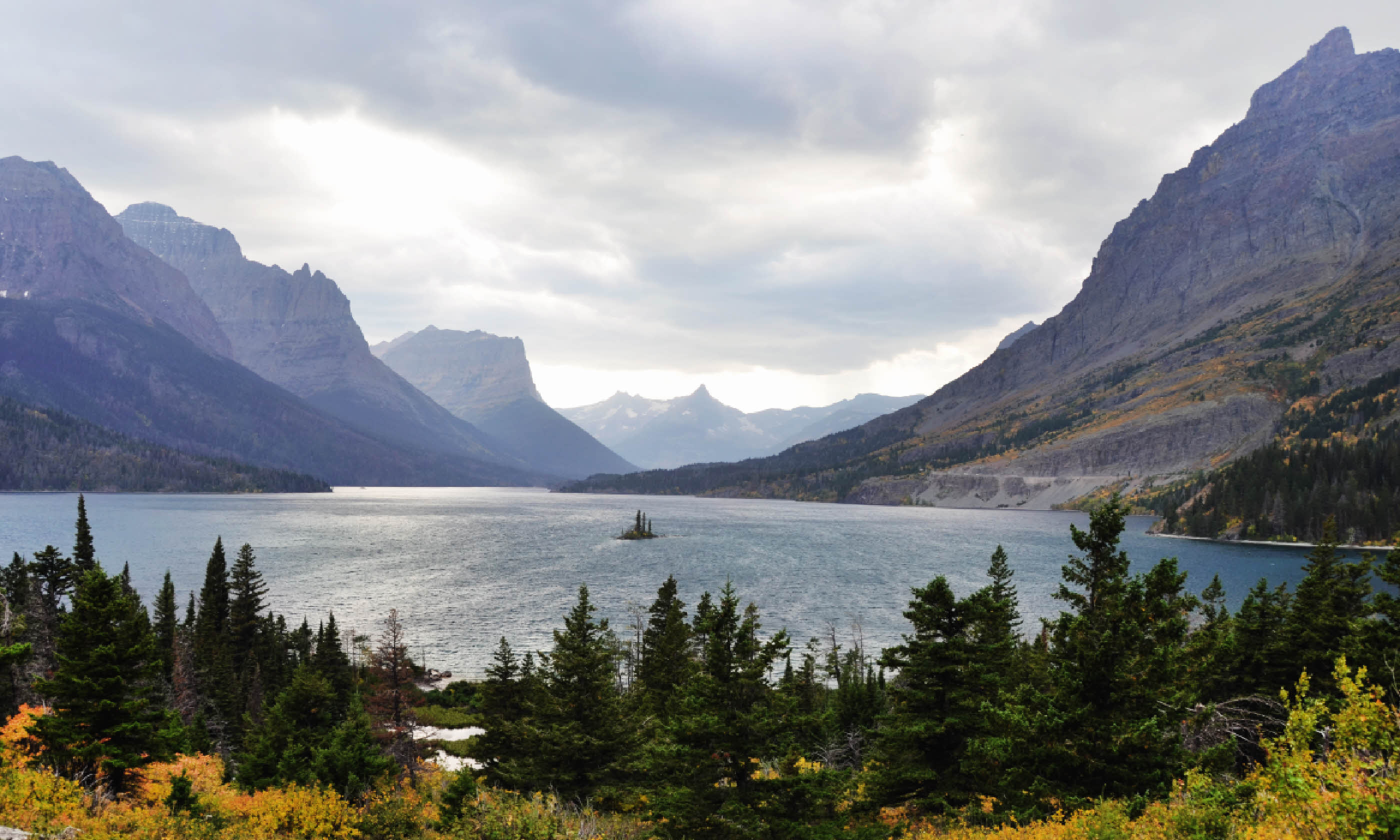 Glacier National Park
Glacier National Park
Keen to spy one I headed deep into the mountains, over the 80km-long Going-to-the-Sun Road. The only west-east highway in the park, it is a spectacular feat of engineering. Hugging the cliffs, it climbs to 2,025m at Logan Pass, where it crosses the Continental Divide, then begins a helter-skelter descent down to the small hamlet of St Mary’s, with a lookout to Jackson Glacier en route.
But ice isn’t the only attraction. The next morning I drove to Many Glacier, at the quieter end of the park. I set off on foot to circle Swiftcurrent Lake – and almost immediately stumbled on some fresh bear scat, littered with berries. A grizzly was on the trail. I paused. Then continued cautiously, the scent of wet fur lingering at every turn. But it wasn’t until I got back in my car that I saw my fuzzy prizes. First a black bear and her cub crossed the road just in front of me. Then, only 200m on, I spotted something moving in the long grass by Lake Sherburne. I took out my binoculars, hands shaking.
There, like a shaggy cow, was a large male grizzly hunting for berries. He lifted his head, sensing my presence, then went back to eating. I stayed for nearly an hour, watching him tugging at the little purple fruits until I realised he was getting closer and it was time to retreat.
Wildlife, wild places
From Glacier’s less-lauded wilderness, I turned the Mustang south towards Wyoming and arguably the country’s most famous wild place: Yellowstone. The park is best known for its successful re-introduction of wolves, so I was disappointed to be told my search for the canids might be fruitless. “We don’t normally do wildlifespotting trips this late in September,” said my guide Jim Palecek, as we began our search. “Prepare yourself that we may not see much.” Ten minutes later we were watching two female bighorn sheep locking horns, while a bull elk was bugling at his harem, and pronghorn antelope and bison grazed nearby. I turned to Jim: “You were saying?”
Just as the sun started to slump below the hills, we spotted a layby full of cars. Wolf-watchers – easy to identify by their expensive telescopes and camo jackets. “There’s a collared grey wolf there called 911,” explained Dusty, from Pennsylvania, who comes every year to watch them. “He’s working with a black wolf and another grey one. If you look through the scope you’ll see they’re circling their prey.” I peered through the eyepiece to see a sad-looking bison struggling to stand as 911 ran towards her, then backed off again. We stayed until they disappeared into the darkness.
The next morning I traded explosive wildlife scenes for literally explosive landscapes. Thanks to over two million years of volcanic activity this national park overflows with geysers, mudpots, steaming fumaroles and hot springs, not to mention a giant canyon.
The predictable chute of Old Faithful spewed like a shaken bottle of pop as I arrived at the visitor centre. I decided to check out Daisy geyser instead – a smaller though no less impressive natural fountain that, being a 30-minute walk from the nearest car park, sees far fewer visitors. At Daisy, the air was eggy with sulphur and the ground stained a rainbow of orange, green and blue by the constant flood of minerals. I was mesmerised.
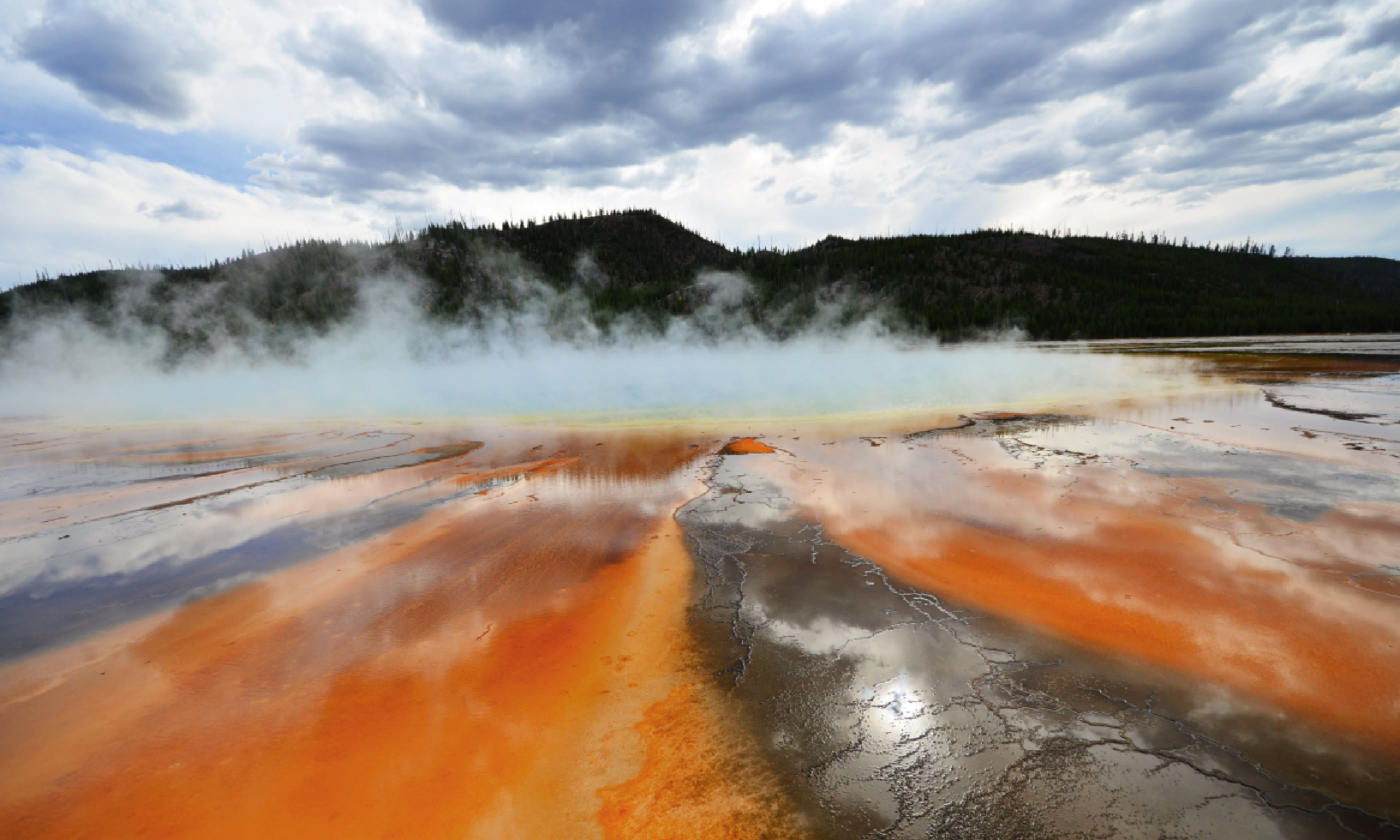 Grand Prismatic Spring
Grand Prismatic Spring
I pulled myself away to head further south, to Grand Teton National Park. In 1942 American landscape photographer Ansel Adams snapped a moody shot of the Teton range above Snake River, so it seemed appropriate that, when I saw the mountains the next day, the clouds obscured most of the view, only allowing fleeting glimpses.
I didn’t mind the rainy weather; it was a good excuse to check out the human history of the park by visiting the Menor’s Ferry Historic District. Realising a passenger ferry across the river would be profitable, Bill Menor built one in 1894, along with a homestead and general store. It was a huge success, until a bridge rendered it redundant in 1927. However, the general store still operates, selling time-warp trinkets, sweets and cookies hot from the stove.
Surprise, surprise
A mining town and former staging area, Rock Springs may not be on the wishlist of many travellers, but it offers two fantastic diversions to a road tripper. The first is the Wild Horse Scenic Drive; around 2,500 wild horses roam free on a high plateau overlooking the city, and I felt the Mustang shake as a herd came pounding past. The second would be revealed to me by John Vase and Pat Doak, of Killpecker Tours, who are passionate about one thing: petroglyphs.
Rock Springs sits beneath mountains where the Shoshone would rendezvous with other tribes, etching into the sandstone symbols of their encounters. “Look here,” said John, as we explored, “drawings of a baby elk within a bigger elk.” He pointed to a slit-like cave, its entrance sprayed with red paint: “We think this is a birthing tunnel.” He gestured at a rock that looked as though it had been clawed by a person in tremendous pain: “The birthing stone”. With fertility symbols rife John believes this was where women gave birth.
Wyoming’s final surprise was its capital, Cheyenne. I only stopped to grab some lunch, but then the Cowgirl Museum caught my eye. Inside I met historian Ben Hilsen, a Stetson-wearing cowboy with a greying moustache. He told me that his great-grandmother had come here from Sweden in the 1800s as this pioneering state was the first to give women the right to own property. Not only that, here is where sidesaddles were thrown out, trousers could be worn instead of skirts and, as early as 1869, women got the vote.
“If you look at our state seal you’ll see it says ‘Equal Rights’,” explained Ben. “When we were trying to be recognised as a state by congress we were told we would have to repeal our suffrage law – but we wouldn’t. Our slogan was: we will remain out of the Union for another hundred years rather than come in without our women.”
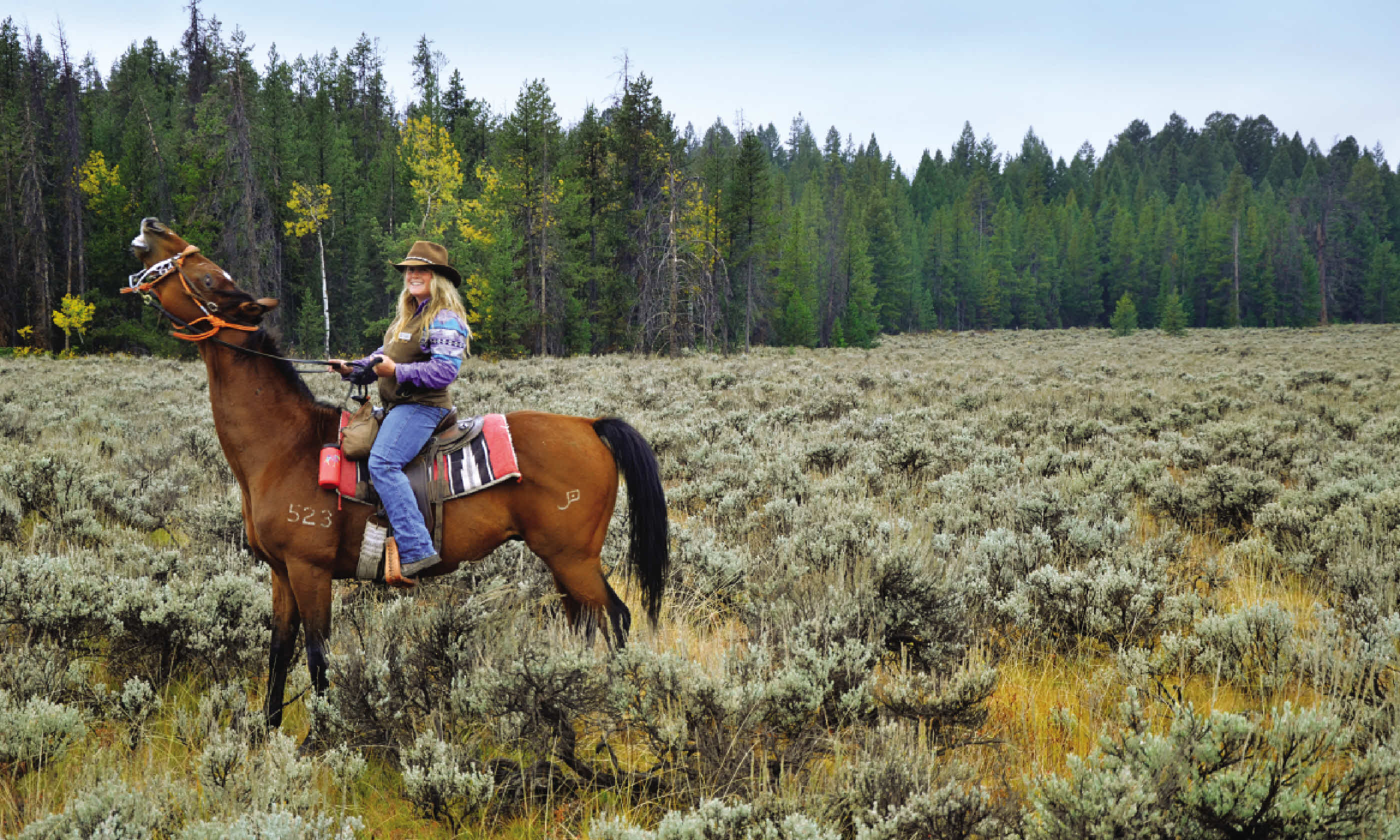 Grand Teton National Park
Grand Teton National Park
Tales of the unexpected
It’s funny how the most unexpected stops can turn out to be your favourites. This had happened in Cheyenne, and again when I crossed my final border into Colorado, and the small city of Fort Collins – the Napa (or Yakima) of craft beer. Brewing started in 1995 with one man in his basement, which became the phenomenally successful New Belgium Brewing Company.
On a tour, between tastings, I learned that 70% of a beer’s aroma is captured in its foam, and that flavours are added only at the end of a mixing/mashing process. More fascinating, though, was learning about the company’s set-up. Employees are given two six-packs a week; after a year of service, they’re offered shares and a custom cruiser bike, so most cycle to work. New Belgium also has its own private solar-panel farm – for every six bottles you buy, it guarantees that two were produced using renewable energy.
A slightly later than planned start saw me eager to let my Mustang loose on one final patch of wilderness – Rocky Mountain National Park. Before long I was on a trail, gawping at the aptly-named Emerald Lake while fish bobbed curiously near the surface and chipmunks and ground squirrels begged for food at my feet. Back in the car, Trail Ridge Road took me into the heart of the park, where yellow aspen trees splashed a shot of colour across the earthy autumn scene. I’d been advised to drive to the visitor centre and then turn back – left – to Denver, where my road trip would end. But I didn’t listen. At that fork, I made a right, and headed to the west of the park instead.
At first, I wondered if I’d regret these extra miles. But then I saw a line of cars near Timber Creek, so pulled over to investigate. There stood a moose, his antlers rising regally above the grass. To his left was a female, knee-deep in the watercourse, grazing on plants beneath the surface; when she raised her head, droplets fell from her chestnut beard.
I’d made the right decision. I didn’t know what else my detour would bring, but then that was the whole point. So with a wide grin, I continued, the road bending around the corner ahead, perhaps leading to many more forks, to endless possibilities.
USA road trip: the route we took
An invaluable resource for planning your trip is
DiscoverAmerica.com
Washington
Stay: Hotel Five (Seattle) is close to the Space Needle and Monorail; it offers free use of bicycles. Doubles from $165 (£104).
Paradise Lodge (Mount Rainier NP) was built in 1916 and oozes period charm. Rooms from $120 (£76).
Cherry Wood B&B (Yakima Valley) offers stays in luxury teepees and the chance to soak under the stars in the outdoor bathhouse. Teepees $245 (£154).
Eat: The
5 Point Café (Seattle) serves good burgers and beer 24 hours a day.
Drink: Head to
Silver Lake Winery and
Cultura to sample two very different local wines.
Buy: A
Seattle City Pass ($64 [£40]) covers access to the main museums, a boat tour on Puget Sound and a trip up the Space Needle.
More info: visitseattle.org,
experiencewa.com
Idaho
Stay: The Wallace Inn (Wallace) is suitable for a stopover. Doubles from $84 (£53).
Eat: The Fainting Goat (Wallace) offers tapas and a self-serve wine tasting bar.
Do: Paddle from Coeur d’Alene with
ROW Adventures, which offers a range of half- and full-day trips, as well as cycling tours along old railway lines nearby.
More info: visitidaho.org
Montana
Stay: St Mary Lodge and Resort has cabins with mountain views and great access to Glacier NP. Cabins from $240 (£151).
C’mon Inn (Bozeman) is a Midwest chain hotel. Doubles from $109 (£69).
Do: Visit the
Museum of the Rockies (Bozeman), home to a treasure trove of dinosaur bones discovered in the mountains. For more dino-thrills, try the
Two Medicine Dinosaur Center.
Wyoming
Stay: Mammoth Hot Springs Hotel (Yellowstone National Park) is a great place to watch elks bugling. It also offers excellent Lamar Valley Wildlife evening tours available from $61 (£39). Doubles from $90 (£57).
Jackson Lake Lodge (Grand Teton) has cabins, cafés and a glass-walled lounge with unrivalled mountain views. It also runs remote horseback tours for all levels (from $45 [£28]) – recommended. Doubles from $269 (£170).
Homewood Suites (Rock Springs) is well placed. Doubles from $109 (£69).
Windy Hills Guest House (between Laramie and Cheyenne) overlooks Curt Gowdy State Park; sit in a hot tub, watching deer feed and owls hoot. Bliss! From $149 (£94).
Do: Killpecker Tours runs passionately guided tours of the petroglyphs outside Rock Springs. From $100pp (£63).
More info: rmi-realamerica.com
Colorado
Stay: Armstrong Hotel (Fort Collins) is on the main street, with a jazz bar below and a coffee shop next door. Doubles from $129 (£81).
Golden Leaf Inn (Rocky Mountain NP) is a lovingly restored old house with great views and even better breakfasts. Doubles from $157.50 (£99).
Eat: Fort Collins Brewery serves good beer and locally sourced food.
Do: Visit Fort Collins to enjoy its organic food store, independent boutiques and coffee shops. Also tour
New Belgium Brewery – booking essential.
More info: colorado.com
To make it a truly classic US roadtrip, hire a Ford Mustang.
Hertz offers 14 days’ Mustang hire for £639, based on collection in Denver and including one-way drop-off charge, unlimited mileage, taxes and charges.





